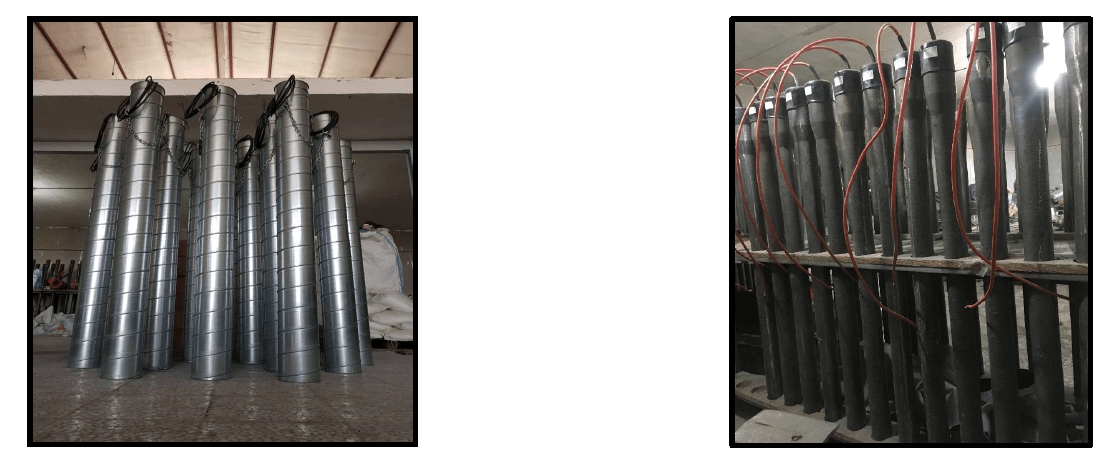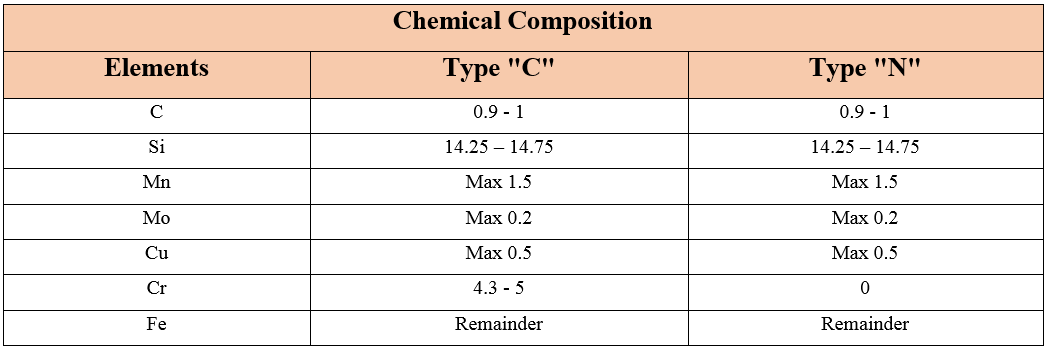

High silicon Cast iron anodes are the most common anodes used for a variety of cathodic protection applications including deep well anode systems, shallow anode installations, offshore applications as well as many other types of cathodic protection systems. So, high quantity of silicon and chromium elements in these anodes increase corrosion resistance significantly. So this matter can guarantee life time of buried facilities in kind of soils with different resistivity for a long time.

The consumption rate of High Silicon Cast Iron anodes has been found to be between 0.2 and 1.2 pounds per ampere-year. For anodes of the same chemistry and microstructure, variance in consumption is primarily due to the chemical and physical characteristics of the anode environment. The consumption rate does not appear to be significantly affected by current density (amperes per unit area of anode surface). The use of coke breeze around the anode in soil ground beds will tend to lower the consumption rate. A generally accepted design guideline for anodes buried in coke breeze is 0.1 Kg/per amp-year.
HSCI anodes are produced in accordance with ASTM-A 518 and IPS-M-TP-750 and BS 1591 standards in two types "C" and "N", the only difference being the amount of chromium in them, and therefore the type " "C" is used in environments with acidic and alkaline soils or seawater and type "N" in environments with neutral soils or fresh water.
The chemical composition of High Silicon cast iron anodes according to the standards (IPS-M-TP-750/1, BS 1591, ASTM A518) is as follows:

Typically, these anodes are produced in two sizes of 2 × 60 and 3 × 60 inches. The commonly used standards for this produce are ASTM-A 518 and IPS MTP 750.
All Rights Reserved for Tavanazob Sana'ati Kavir.